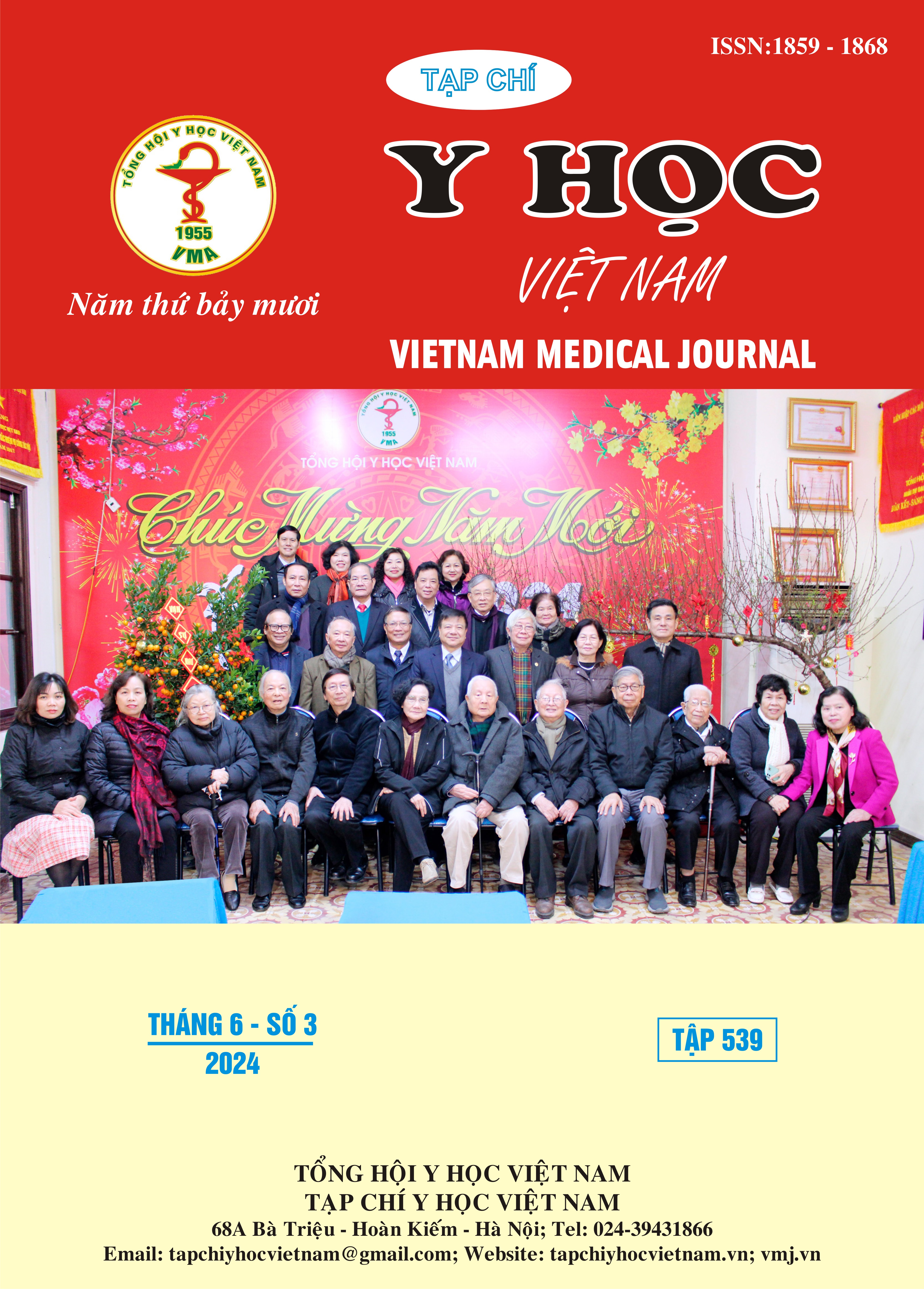GROWTH CHARACTERISTICS OF THE CRANIOFACIAL COMPLEX OF VIETNAMESE CHILDREN FROM 7-13 YEARS OLD
Main Article Content
Abstract
Objective: To determine the growth characteristics of the craniofacial complex in Vietnamese children aged 7–13 years. Methods: A total of 691 cephalometric radiographs were obtained from 287 children who met the study criteria. Cephalometric radiographs were taken by a single radiographic technician using one standard technique to limit variation. The radiographs were then drawn on a cephalometric tracing paper, anatomical landmarks were determined, and distances and angles were measured by a single researcher. The anatomical landmarks were the sella turcia (S), nasion (N), barium (Ba), anterior nasal spine (ANS), A and B, gnathion (Gn), menton (Me), and gonion (Go). Based on these points, the distances and angles represented for different areas of the craniofacial complex were measured, such as the skull base, maxilla, mandible, and facial height. Data were statistically analyzed at a significance level of p < 0.05. Results: The distances and angles significantly changed from 7 to 13 years of age, except for the Ba-S-N angle. The height to length ratio of the craniofacial complex was also significantly altered in a stable direction. During this period, the craniofacial complex grew in three dimensions. Among the patterns of the craniofacial complex, mandibular length and posterior facial height increased the most, whereas the length of the anterior skull base increased the least. Conclusion: Different patterns of the craniofacial complex were significantly grew in patients aged 7-13 years old. The ratio between the length and height of the patterns also increased or decreased, indicating changes in the facial shape.
Article Details
Keywords
craniofacial complex, growth, length, height, cephalometry
References
2. Đình Khởi T, Ngọc Khuê L, Thị Dung Đ, Ngọc Chiều H, Diệu Hồng Đ. Một số đặc điểm cấu trúc sọ mặt ở trẻ em người Kinh từ 7-9 tuổi trên phim sọ nghiêng theo phân tích Ricketts. Tạp chí Y học Việt Nam. 09/13 2021;505(2)doi:10.51298/ vmj.v505i2.1138
3. Bambha JK, Van Natta P. Longitudinal study of facial growth in relation to skeletal maturation during adolescence. American Journal of Orthodontics. 1963/07/01/ 1963;49(7):481-493. doi:10.1016/0002-9416(63)90203-3
4. Nanda RS, Ghosh J. Longitudinal growth changes in the sagittal relationship of maxilla and mandible. American Journal of Orthodontics and Dentofacial Orthopedics. 1995/01/01/ 1995; 107(1):79-90. doi:https://doi.org/10.1016/S0889-5406(95)70159-1
5. Lux CJ, Conradt C, Burden D, Komposch G. Transverse development of the craniofacial skeleton and dentition between 7 and 15 years of age--a longitudinal postero-anterior cephalometric study. Eur J Orthod. Feb 2004;26(1):31-42. doi:10.1093/ejo/26.1.31
6. Thordarson A, Johannsdottir B, Magnusson TE. Craniofacial changes in Icelandic children between 6 and 16 years of age - a longitudinal study. Eur J Orthod. Apr 2006;28(2):152-65. doi: 10.1093/ejo/cji084
7. Coben SE. The integration of facial skeletal variants: A serial cephalometric roentgenographic analysis of craniofacial form and growth. American Journal of Orthodontics. 1955/06/01/ 1955; 41(6):407-434. doi:https://doi.org/10.1016/ 0002-9416(55)90153-6
8. Dermaut LR, O'Reilly MI. Changes in anterior facial height in girls during puberty. Angle Orthod. Apr 1978; 48(2): 163-71. doi:10.1043/0003-3219 (1978)048<0163:Ciafhi>2.0.Co;2


